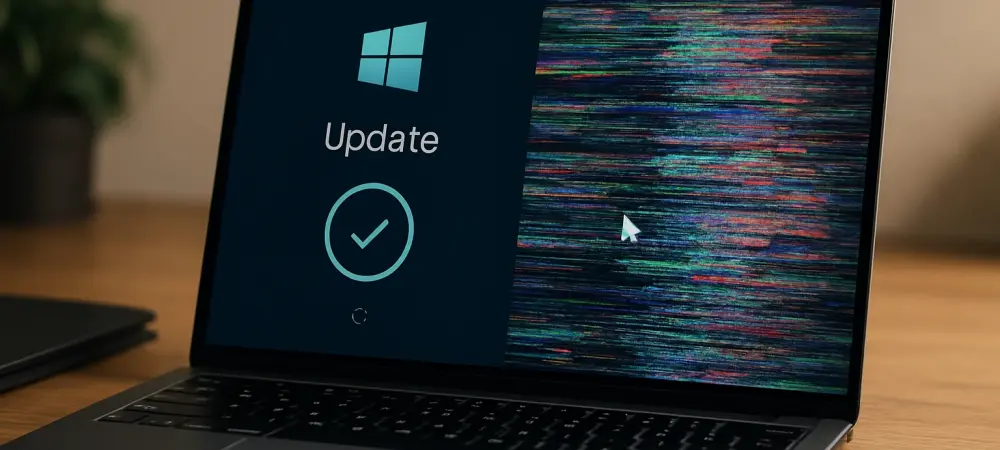Introduction
The Windows operating system, a foundational element of both personal and professional computing environments, has long grappled with update-related challenges that test user patience. Among these, a persistent glitch with the “Update and Shut Down” feature—where devices restart instead of powering off after updates—has been a notable irritation for users of Windows 10 and 11. This timeline article explores the evolution of this issue, tracing key events from its early emergence to the long-awaited fix in 2025, and examines why Microsoft finally addressed this bug. The significance of this resolution lies in its reflection of Microsoft’s responsiveness to user feedback and its commitment to improving system reliability, especially as Windows 10 approaches the end of regular support in October 2025. By detailing the chronological progression of this glitch, the impact on users, and the broader context of update challenges, this piece aims to illuminate the importance of such fixes in maintaining trust in a widely used platform.
Timeline of the Windows Update Shutdown Glitch
Early 2000s: Emergence of the Shutdown Bug
In the early 2000s, with the rise of Windows XP and later Windows Vista, the “Update and Shut Down” glitch first appeared as a sporadic issue. Users selecting this option after an update expected their devices to power down, but many encountered unexpected restarts instead. Initially regarded as a minor inconvenience, the problem stemmed from complexities in how Windows handled power states during update processes. Microsoft, at the time, focused on more pressing security and performance patches, allowing this functional error to persist without immediate resolution. This early period set the stage for years of intermittent user complaints, as the glitch became embedded in the system’s legacy code.
2015: Windows 10 Launch Amplifies User Complaints
With the launch of Windows 10 in 2015, the shutdown glitch gained significant attention as the user base expanded rapidly. Reports of devices restarting instead of shutting down after updates became widespread, particularly among laptop users who faced battery drain or overheating when systems powered on overnight. Online forums and tech blogs documented growing frustration, yet Microsoft’s priority remained on stabilizing the new operating system and addressing critical security vulnerabilities. The lack of a swift fix during this time began to erode trust in the update process, highlighting the glitch as a recurring pain point for a larger audience.
2021: Windows 11 Introduction and Continued Issues
The introduction of Windows 11 in 2021 brought a modernized interface and new features, but the “Update and Shut Down” glitch persisted, unaffected by the system overhaul. Users had hoped for a resolution with the updated OS, yet specialists identified the issue as a “decades-old” problem rooted in legacy code. Community-driven workarounds, such as manually shutting down after updates, became common, underscoring Microsoft’s delayed response. Frustration amplified through social media and tech journalism, putting pressure on Microsoft to recognize the glitch’s impact, especially on mobile and casual users who relied on predictable power management.
October 2025: Microsoft Releases the Long-Awaited Fix
By October 2025, Microsoft finally resolved the shutdown glitch with the release of the optional update KB5067036, targeting Windows 11 25## Build 26200.7019 and later versions, as well as applicable patches for Windows 10. This update ensured that selecting “Update and Shut Down” correctly powered off devices, addressing a frustration that had lingered for over a decade. The timing of the fix, coinciding with broader reforms in the update ecosystem and the nearing end of Windows 10’s regular support on October 14, 2025, signaled a renewed focus on user experience. For many, this resolution marked a small but meaningful victory, restoring confidence in the reliability of update processes.
Broader Context and Key Turning Points
Recurring Challenges in Update Management
Beyond the specific timeline of the shutdown glitch, Microsoft’s update ecosystem has faced ongoing challenges, such as driver errors like 0x80070103 and initial missteps in update naming simplifications in 2025. The simplification effort, aimed at making update titles more user-friendly, initially removed critical date information, frustrating IT administrators until Microsoft partially reversed the decision. These issues reflect a broader tension between catering to casual users and meeting the needs of professionals, a theme that parallels the delayed response to the shutdown glitch.
Impact of User Feedback
A critical turning point across this timeline was the persistent role of user feedback in driving change. From amplified complaints following the 2015 Windows 10 launch to vocal criticism on social media by 2021, community voices ultimately contributed to the 2025 fix. This pattern demonstrates how sustained user input can influence corporate priorities, even for issues initially deemed minor. The resolution also positively impacted trust, particularly for laptop users who had long dealt with battery drain risks due to unexpected restarts.
Conclusion
Looking back, the journey to resolve the “Update and Shut Down” glitch spanned decades, with pivotal moments in the early 2000s, 2015, 2021, and finally 2025, when Microsoft delivered a fix that addressed years of user frustration. This timeline highlights not only the persistence of legacy issues but also the power of community feedback in shaping technological improvements. As a next step, users and IT professionals alike could benefit from exploring Microsoft’s ongoing update reforms and monitoring how the company balances quick fixes with comprehensive system overhauls. Delving into resources on Windows update policies or joining user forums could provide deeper insights into preventing similar glitches in future iterations, ensuring a more seamless experience as the Windows ecosystem evolves.

